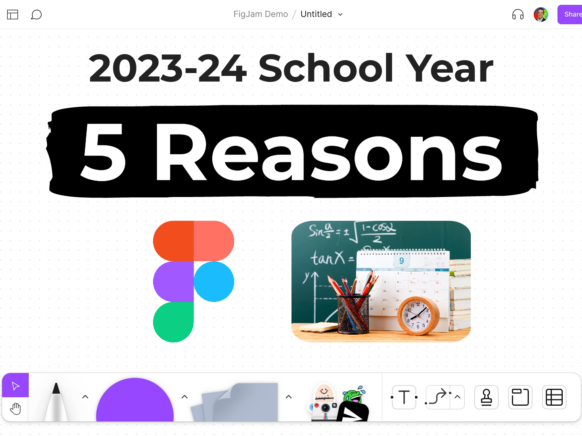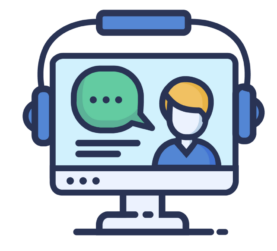Guest Post by Tom Mullaney. Tom infuses professional development with creativity, collaboration, and fun based on his experience as a Special Education and Social Studies teacher.
FigJam is a collaborative whiteboard that students and teachers can use to brainstorm, ideate, and collaborate. From simple drawings to sticky notes and comments, FigJam is a fun and engaging way to engage students in the classroom.
Here are five reasons FigJam will be your go-to edtech tool this school year.
1. Templates
Let FigJam work for you with its plethora of ready-to-use education templates! From popular education templates such as K-W-L charts, Venn Diagrams, and timelines to story arcs and student check-ins, FigJam has the templates teachers need to get started.
Teachers are prompted to add templates when creating FigJams and can add multiple templates to a FigJam when editing.
2. Sections
Sections allow teachers to organize content and give students and groups distinct spaces to collaborate in a FigJam. Teachers can also hide sections and unveil them to guide students through a lesson.
3. Making connections
FigJam’s Connector tool gives students a visual representation of connections. Students can customize connector color and thickness, make dashed or solid connections, and choose from six start and end point options. They can even write text in the connector. An even more visual connecting tool is washi tape. Use it to show what two things have in common.
4. Multimedia
Students can watch YouTube videos, record and play their voice, add images, and add GIPHY animated GIFS without leaving a FigJam. Have students click play on a YouTube video in a FigJam. They can type their reactions without having to pause the video!
5. Sticky Notes
FigJam is like Padlet on steroids. Sticky notes display their author’s name. Add hyperlinks and tag collaborators in sticky note text. Build on ideas and make connections by clicking the plus sign on any side of a sticky note to add another sticky note.
Want to learn more about how Tom Mullaney and our other EdTechTeacher instructors can help you and your fellow educators? Take a look at EdTechTeacher’s services page or feel free reach out to us at [email protected] to learn about our custom professional learning services that help teachers thrive in the classroom!


